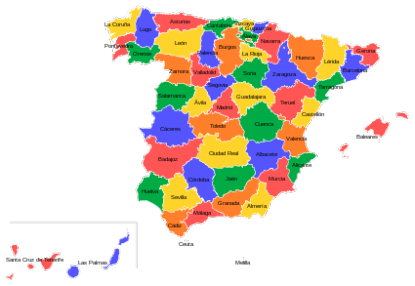
Spain is Different
Spain is located on the Iberian Peninsula, of which it occupies 80% (the remaining 20% being Portugal), in the southwest of Europe. To the north are France and Andorra with the Pyrenees as a natural border. Along with the Balearic islands (Mallorca, Menorca and Ibiza) in the Mediterranean, the Canary Islands in the Atlantic (near the Moroccan coast), and Ceuta and Melilla (located in Northern Africa) belong to the Spanish territory.
Spain ranks third, in Europe, for its size and fifth for its population. Spain has more than 40 million people, most of them living in the cities or along its Costas. Spain is divided into 19 autonomous areas, including the areas outside the Iberian Peninsula. The most prosperous areas are Madrid, Catalonia and the Basque Country.
Spanish is the main language, spoken throughout Spain. But there are some regions with additional languages. In Cataluña people also speak Catalan, in Galicia Galician, Basque in the Basque Country, and finally Valencian in the Valencian society. This can be very confusing at times, because in Cataluña and in the Basque Country many people consider their dialect the main language. In schools sometimes the regional language is taught as the first language, with Spanish as a secondary one. Road signs are often first in Basque or Catalan, and then in Spanish, in these autonomous regions.
GASTRONOMY
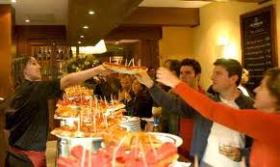 Spanish food history may be among the most varied and interesting in the world. Since before the Romans the Iberian Peninsular has received influence from many cultures and regions, and its gastronomy has evolved along with each century, each invasion and each conquest. Even today, Spanish cuisine is still evolving and continues to be one of the forerunners in the promotion of the healthy Mediterranean diet.
Spanish food history may be among the most varied and interesting in the world. Since before the Romans the Iberian Peninsular has received influence from many cultures and regions, and its gastronomy has evolved along with each century, each invasion and each conquest. Even today, Spanish cuisine is still evolving and continues to be one of the forerunners in the promotion of the healthy Mediterranean diet.
In Spain, they have what is known as the Mediterranean Diet, composed by a large quantity of vegetables, fish, meat, legumes, and the most important component, olive oil.
On the other hand, the love the Spanish have for wine is well known. If you had to determine a national drink for Spain, without a doubt it would be Spanish wines. Spending a warm summer night drinking wine and eating tapas at the plaza is one of the most typical images of life in Spain. Used for cooking, drinking and even for throwing over people (like in the wine festivities in Jumilla), wine is ever present in the Spanish day to day, and occupies an important part of the country’s production and exportation.
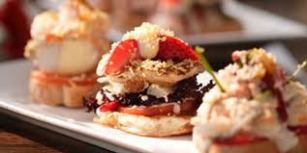 Such is the importance of gastronomy and food for the Spanish people, that it has been approved, starting next September, for schools in Spain to teach Gastronomy as an academic subject. Some of the most popular dishes in Spain, depending on the different regions are Paella, Gazpacho, Tortilla de patata and a variety of Pinchos and tapas.
Such is the importance of gastronomy and food for the Spanish people, that it has been approved, starting next September, for schools in Spain to teach Gastronomy as an academic subject. Some of the most popular dishes in Spain, depending on the different regions are Paella, Gazpacho, Tortilla de patata and a variety of Pinchos and tapas.
Summer is coming now and so are the many Gastronomy and Popular festivals, where fun, good food, and good wine is always guaranteed. Some of the most popular festivities are:
These are just some of the cultural things happening in Spain. So if you are looking for your next vacation destination, don´t doubt it, learn Spanish and have a great time visiting this wonderful country.

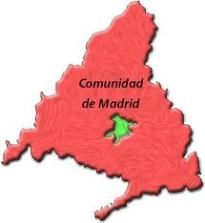
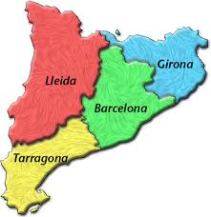
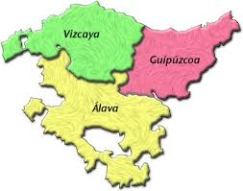


Leave a Reply